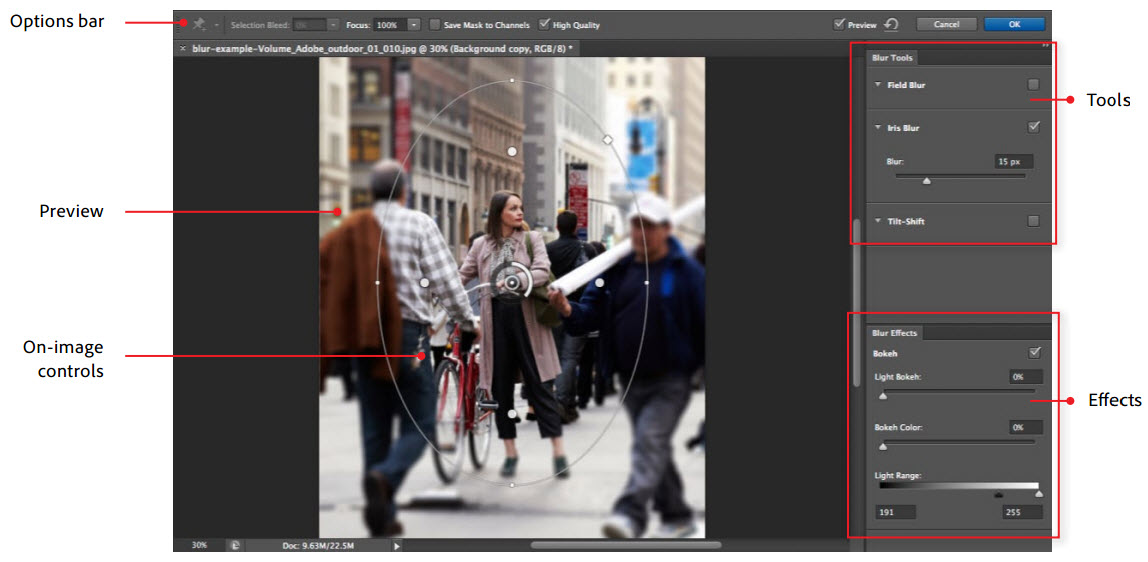What Is Open Cl Photoshop
Tin can OpenGL And OpenCL Overhaul Your Photograph Editing Experience?
Applications: Adobe Photoshop CS6
One common definition of heterogeneous calculating is the integration of graphics capabilities on the aforementioned die every bit the CPU (central processing unit). This isn't quite how Adobe uses the term. Rather, Adobe takes a more systemic view, looking for all the means in which its software tin can leverage computing resources, and and then discovering which areas of the system all-time provide those resources. Equally the company told us, heterogeneous computing is "multiple instruction sets and types of code in the aforementioned computer, and utilizing all those resources to give the users a better experience."
The new Photoshop CS6 illustrates this very well. From its years-ago roots as a multi-threading pioneer to its just-added entrance into OpenCL, Photoshop looks for ways to accelerate features wherever they can be feasibly found. The object of the game is to never delay the user's experience. Ideally, filters should apply in existent-time, and a system should handle 30 layers on a 30-megapixel image with ease. Traditionally, we would have counted on CPU advances to brand this dream a reality, merely as nosotros've seen from both AMD and Intel lately, expecting major leaps forrard in processor performance will likely set yous upwards for a bad time. Today, progress is beingness facilitated through the integration and utilization of many unlike subsystems (including the GPU), faster pipes, more parallelism, and so on.

Considering different software features and disparate workloads do good from a variety of hardware pattern decisions, it's impossible to have a complete discussion of GPU-based acceleration without examining the means speed-ups are accomplished. Photoshop CS6 introduces back up for OpenCL in its Blur Gallery filter tools. Meanwhile, Photoshop continues to build on its OpenGL capabilities by accelerating many functions, including Liquify, adaptive wide angle, transform, warp, puppet warp, lighting effects, and pretty much every 3D feature (shadows, vanishing signal, sketch rendering, etc.), except the ray tracer. Additionally, OpenGL powers the oil paint filter, while new features similar groundwork saving are threaded, which is really handy on very big jobs.
Despite Adobe being a large company and Photoshop being one of the industry's near renowned applications, the Photoshop team is surprisingly small: fewer than 60 software and quality engineers. In our discussions, Adobe quipped at one point, "Throwing more than bodies at a trouble doesn't always brand software better." Specially given this relatively small head count, it'south doubly remarkable that Adobe has tightened its revision times from 18 to 24 months down to 12. Just keep in mind that faster revision cycles will likely hateful a slower apparent adoption of a given new engineering from version to version.
Adobe provided us with two scripts for testing its latest OpenCL and OpenGL performance. In the first example, the choice was inevitable: Mistiness Gallery, the only family unit of OpenCL-accelerated filters in the application. We ran 4 iterations of a general blur effect being practical to a threescore.2 MB, 5615x3744 PSD file. Tests were either RGB or CMYK, and they applied a blur value of either 25 or 300, giving the states four tests per mistiness group. The script ran the event vii times and output a CSV file, from which we pulled the average time to complete the filter effect.

Adobe supplied a very similar script for its OpenGL-based Liquify filter, which had no varying parameters.
Notation that we controlled GPU acceleration through Photoshop's Preferences > Performance > Graphics Processor Settings options. In this area, unchecking the Use Graphics Processor box will disable all OpenGL and OpenCL acceleration, which turned out to be the merely manner to get accurate results for non-accelerated tests. The Advanced Settings push volition spawn a pop-upwardly with check boxes for OpenGL (unintuitively called Apply Graphics Processor to Accelerate Ciphering) and OpenCL. Apparently, unchecking both of these nonetheless leaves OpenGL enabled.
Source: https://www.tomshardware.com/reviews/photoshop-cs6-gimp-aftershot-pro,3208-6.html
Posted by: solistheirse.blogspot.com

0 Response to "What Is Open Cl Photoshop"
Post a Comment